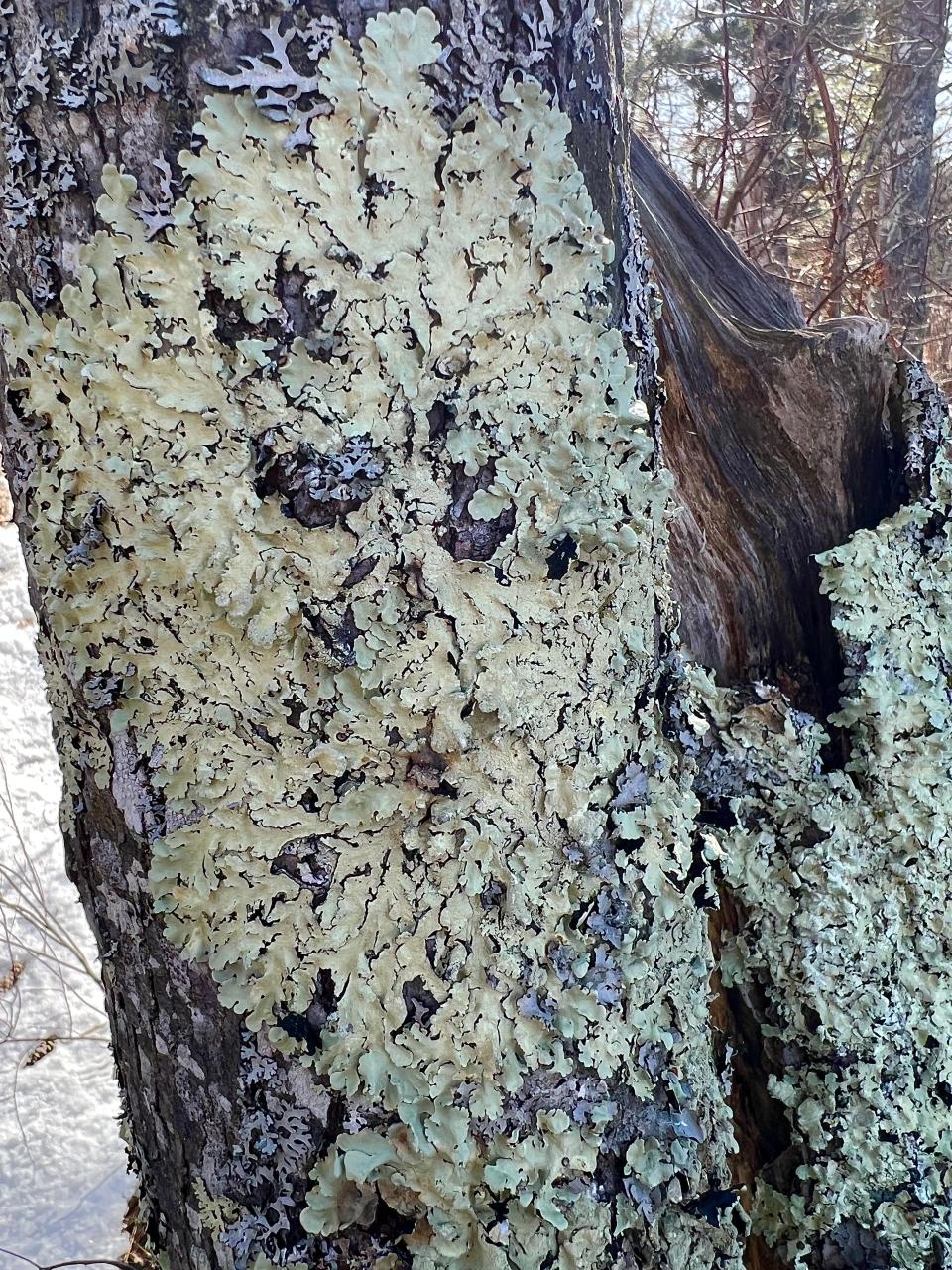Why lichens are more than just a splash of green on tree trunks: Nature News
I know many of us want winter to come to an end, but I would like just one more good snowstorm.
I love all seasons, but I need a little more of that winter bleakness in the woods, primarily to help me pursue my newest love: lichens.
Right now, when the deciduous trees have all lost their leaves, and the majority of the forest is devoid of greenery, hauntingly gray and monotone, the lichens are the exception. And one that is so common that even I, a novice lichenologist, can recognize is the common greenshield lichen.
This is an abundant and conspicuous lichen found on hardwood tree trunks everywhere around here. It is large, usually somewhat circular, and has a distinctive yellowish-green color (when wet — more gray when dry). It is so large and distinctive that it can be identified from a moving car, and so has been called the “40-miles-an-hour-lichen” (“Field Notes: The Common Greenshield Lichen” by Bruce Lund, Beaver Brook Association).

But instead of driving, take a walk. You can find the common greenshield lichen clinging to the trunks of deciduous trees while walking along almost any trail in the woods here in New England.
I love thinking about the complicated association of life forms that is a lichen. Lichens are composed of at least two organisms, a fungus and an alga or sometimes cyanobacteria (a type of photosynthetic bacteria) and sometimes other bacteria, fungi, or algae. The fungus and its associate(s) survive through a close (symbiotic) relationship in which, most simply, the fungal cells house the algae. The algae obtain water and protection from drying out and ultraviolet damage by the fungus. In return, the fungal partner obtains sugars and carbohydrates from its photosynthetic partner.
Nature News: The ingenious strategies NH and Maine plants use to survive the winter
Since greenshield lichens are so widespread, it behooves us all to get to know them. Lichens have several different growth forms.
The greenshields are a foliose type of lichen, a form that is leaf-like with flat sheets of tissue that can be peeled from the substrate, in the case of common greenshield, from the bark of a tree. These “leaves” are attached to the substrate with one or more stem-like structures called rhizines. (To be clear, these are not leaves, they are the body of the fungus). Other common growth forms are crustose, crustlike lichens that grow tight against, even into, the substrate, and fruticose lichens, which grow as free-standing branches like tiny trees.
Nature News: Why bird watchers see birds that aren't supposed to be here this winter
If you want to learn how to identify different types of lichens, this is one of the first things to look for– the growth form. Also, pay attention to where the lichen is growing. Some prefer to grow on rocks (like common greenshield’s almost indistinguishable cousin, rock greenshield). Others grow on the ground. Our common greenshield can be found on almost any surface but prefers to grow on bark and wood.
One reason the greenshield lichen can be more commonly found than other lichen species is because it is relatively tolerant of pollution. Lichens are often used to monitor air quality. Since lichens do not have roots, they obtain all their nutrients from the air.

According to the National Park Service (Lichens as Bioindicators), “Lichens are sensitive to atmospheric pollution such as nitrogen (N) because they receive all their nutrients and water from wet and dry atmospheric deposition (fall out)... Too much N can harm and kill the algae’s chlorophyll, which is used to produce sugars feeding it and the fungi. Certain species of lichen are more tolerant of N than others. Scientists monitor lichen communities. If an increase in N tolerant species in combination with a decrease in N sensitive species occurs this may indicate an increase in atmospheric N deposition.” They refer to lichens as canaries in the coal mine for N deposition and other pollutants. A shift in population can signal an ecosystem change.
Need a reason to get outside and go for a walk? A lot can be learned from these often-overlooked life forms! The National Park Service recommends taking a walk around your neighborhood and submitting lichen observations to iNaturalist.org. These observations can be used by researchers to track changes in the distribution of lichens associated with changes in air quality.
Note to readers: Susan Pike will speak at the D.A Hurd Library, North Berwick, on Feb. 28 at 5 p.m. on "The Biology of Lichens." She will also co-lead a "Lichens and Ledges" walk with the Great Works Regional Land Trust on March 16, from 10 a.m. to 1 p.m., at the Kenyon Hill Preserve in South Berwick.
Susan Pike, a researcher and an environmental sciences and biology teacher at Dover High School, welcomes your ideas for future column topics. Send your photos and observations to spike3116@gmail.com. Read more of her Nature News columns at Seacoastonline.com and pikes-hikes.com, and follow her on Instagram @pikeshikes.
This article originally appeared on Portsmouth Herald: Nature News: Why lichens are more than just a splash of green on trees

